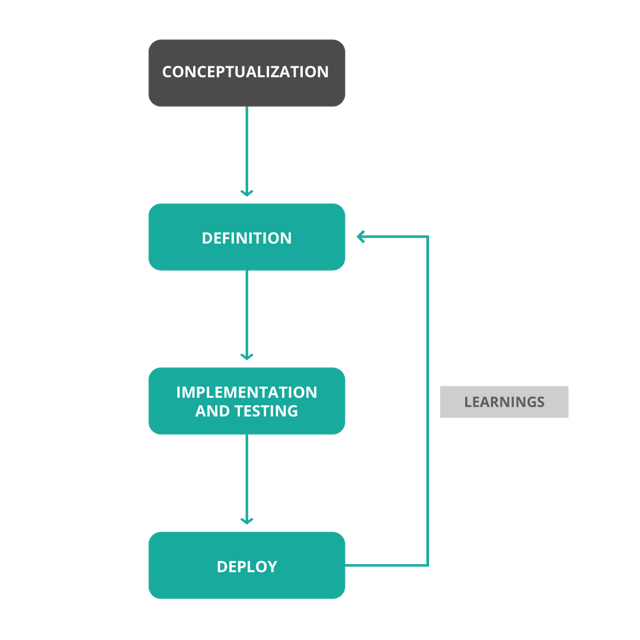People focus too much on code or technical aspects and that often makes them lose focus on the problem itself, which leads to poor or underperforming implementations. There is no secret recipe for a guaranteed software development method and a lot has been written about methods and processes that lead to a high quality software. It does depend on the goals that need to be achieved but the question remains: which one leads us to better and sounder implementations?
The success of an implementation is always dictated by what stakeholders see it to be. The stakeholders’ expectations in terms of experience, requirement coverage, process mapping and ability to adapt to changing needs define what constitutes a successful software implementation. Satisfying those expectations by delivering a piece of software is never resumed to providing a solution for one complex problem; instead we need to divide and conquer, reducing the complexity of a large problem to multiple sub-problems and then mapping, executing and assessing solutions systematically for each of the sub-problems.
It is important to test the solution and its efficiency in a real operation environment, improving it continuously in an iterative process. This means defining, designing and building a solution and then deploy it and review it, as much as possible to improve its ability to meet the stakeholders’ expectations.
When adopting a methodology, there are always pro’s and con’s, do’s and dont's. That’s why is important to prevent getting stuck to something that isn’t working for a team. Being able to improve and easily maintain a working method will also leave teams to focus on the solutions and better communicate and interact with stakeholders. Involving them on the entire project life-cycle is a way to maintain constant feedback and reduce risk in terms of expectations and delivering useful implementations. Stakeholders deal with the difficulties every day so we must include them when we’re defining, reviewing, testing and adjusting a given solution. Each stakeholder will provide invaluable information that will allow a given solution to a specific problem to be better suited to his expectations and, consequently, improve the overall quality of the global solution.
There are the 4 steps of software development that Processware iteratively uses for its solutions and product development.

- Conceptualization – The concepts, lifecycle and workflows underpin the project global vision;
- Definition – Definition of process models, mockups and test benches are essential to determine how the solution will work for end users;
- Implementation – Coding and testing;
- Deploy – Key users interact with the solution at the end of each iteration, giving constant feedback on real life operations. From this understanding, new adjustments can be done in a following iteration.
Adopting this methodology allows us to deliver frequently with continuous attention to excellence and good design, to emphasize interactions between business people, developers and testers and to better adjust to changing circumstances and requirements. This requires always some experience and seniority to deal with new situations and take the right decisions during the development process. That’s why communication between everybody involved is crucial to maintain project sustainability.
Keeping the necessary documentation and design requires extra effort and is time consuming if new requirements come. That’s why prototyping can be a powerful tool to optimize our methodology.
Prototyping accelerates the necessary design and documentation requirements, reducing the length of each iteration. During the design process, we can provide stakeholders or co-workers a preview of how the system will look like, without coding it or incurring in any development cost, focusing on functionality and without losing the focus in the process. Balsamiq Mockups is Processware's adopted product to create user interface and process mockups, you can find how it looks like here.
Which model should be followed to deliver sound implementations? There is no correct answer, it will always depend on the project's aims and goals of a software company. However, we believe that for process-oriented implementations, it’s truly more efficient to adopt a systematic, iterative and easily adaptable approach that primes execution and assessment for continuous improvement.